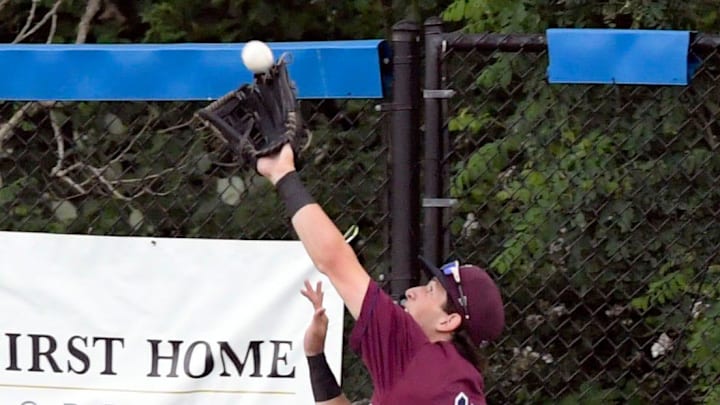
2022 Draft Prospects The San Francisco Giants Could Target
College Pitching
Moving on to college pitching, the consensus is that this is the weakest demographic in this year's draft class in terms of talent up top, but there is a strong group of prospects in the late-first round that the organization could target. College lefties is a deep group around the late-first to the second-round range and even though the Giants do not have a depth issue in lefty pitchers, it sure feels good to add another one.
One of those lefties is Florida State left-hander Bryce Hubbart. Hubbart checks a lot of boxes for the Giants. He is young for the class (will turn 21 just before the draft), fills a nice demographic in the farm system (lefty pitching), could make a run for being a legitimate first-round talent (57th in Baseball America, 49th in MLB.com, 40th in Prospects Live, 12th in Brian Recca's rankings), and a metrics-friendly profile.
Hubbart might be under six-foot, but it gives him the natural ability to pitch with a flatter vertical approach angle. His fastball velocity fluctuates from the low-90s to as high as 97 MPH, but it has an above-average spin rate and elite-induced vertical break. Pair it with his flatter vertical angle and he generates plenty of whiffs above the zone.
He has two distinct breaking balls that have the potential to become whiff-inducing pitches. His curveball has a 1-7 shape with impressive vertical and horizontal movement while his slider is a frisbee with a heavy horizontal break. He has a changeup, but it's a distant fourth pitch. His delivery is dynamic with moderate effort and he can fill the strike zone well with his pitches.
The right-handed college pitching crop lacks a true ace, there are solid pitching prospects out there. One of those prospects that might be available for the front office (most likely not) is Adam Maier. This is purely a pop-up selection, but he checks a couple of boxes for the ideal Giants pick. He is extremely young for a college prospect (only 20.6 years old at draft day), a seam-shifted wake-friendly profile.
Maier might become this year's Sam Bachman, the former infielder does not have a lot of mileage in his right arm but he can spin a breaking ball very well. His slider is a plus pitch with spin rates that exceed 3,000 RPM and has a late but hard horizontal movement with a bit of vertical movement. His changeup is also excellent where it flashes hard fading action, although the velocity separation is not there yet. His fastball is a legitimate sinker thrown from 91 to 97 MPH with a solid sink. His motion is not the most active in the world but it is easy, although his true 3/4 arm slot could use some adjustment for a better vertical angle.
Other pitchers that might be in the conversation come draft time include three left-handers: Hunter Barco (21.6 years old), Carson Palmquist (21.7), and Cooper Hjerpe (21.3) all pitch from a low arm slot generating a flat vertical approach angle with their fastballs and deception against lefties.
The three breaks the age rule the Giants have in the first round and Palmquist and Hjerpe are not particularly well-regarded prospects at this point. However, Palmquist and Hjerpe might jump after a strong 2022 season. Palmquist has the best command potential out of the three and is shifting into the rotation but Hjerpe has the age advantage where he enjoyed an uptick in the fall reaching 97 MPH, the hardest out of the three, and is a capable strike-thrower as well with potentially the best changeup out of the three.
⚾️ Led Oregon State to a 3-1 win over No. 6 Arizona
— Pac-12 Conference (@pac12) May 24, 2021
? Career-high 11 strikeouts#Pac12BSB Pitcher of the Week: Cooper Hjerpe, @BeaverBaseball
Full Release ➡️ https://t.co/pYrkjPIiBx#GoBeavs | #BackThePac pic.twitter.com/lzLNRC0d7F
If there is a right-hander to look out for, it's Peyton Pallette. He has plenty of red flags (smaller frame, lack of track record, mechanics that lacks deception, injury history that includes undergoing Tommy John surgery that ended his 2021 season before it even began) but there are also a lot of positives that could be enough to tilt the organization’s preference (3,000+ RPM curveball, dynamic athlete on the mound, mid-90s velocity). The front office usually will not turn a blind eye to the red flags but if they think the talent is there, it will not be a stunner if he gets selected even if his stock fell after undergoing Tommy John.
